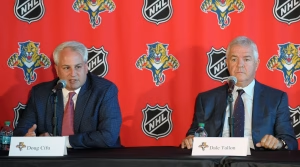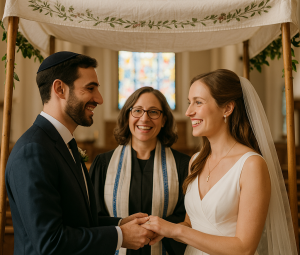The 2010 March of the Living is a two-week odyssey that is truly a trip of a lifetime. It included a week of remembrance and learning in Poland, followed by a week of renewal and celebration in Israel.
Six hundred participants from across Canada, representing three generations, journeyed together. Most significant was the group of octogenarian Holocaust survivors who are so committed to this program that several have accompanied as many as 10 trips to date.
The chaperone leaders who supervise the student participants and support the survivor docents are omnipresent and indefatigable.
Grade 11 students constituted the vast majority and core of our delegation. “This is the last generation to hear the stories of the Holocaust directly from the survivors themselves,” Eli Rubenstein, national director of the March of the Living program, said. “Thus it is both a privilege and an obligation for these young people to listen to, and learn from, the stories of the survivors. In the time, when the survivors can no longer tell their stories, they will be the ‘witnesses for the witnesses.’”
This year, an adult group of 36 people – many of whom like my wife, Linda, and me, are children of Holocaust survivors – was included. We travelled on a concurrent itinerary, joining the students at many sites and for all major events.
The principal activities in Poland included visits to various sites that are vestiges of a once-vibrant Jewish community that existed for 1,000 years. Three-and-a-half million Jews lived in Poland before 1939, when one in three people in Warsaw was Jewish.
We were overwhelmed by the magnitude of the current voids and the significance of what once was, but is now absent.
To enrich our learning, each participant received a personal diary that contained information about the sites that we would visit; Poland and its history; the Jewish community of Poland before World War II; the Holocaust; Canada’s role in World War II, and the history of Zionism and Israel. The diary’s opening page includes the “10 goals of the March of the Living,” as well as a “pledge” of commitment to increase one’s knowledge of our history and heritage and to actively participate in the fight against every form of discrimination manifested against any religion, nationality or ethnic group.
A cataclysmic political event occurred the day after our arrival in Poland. A plane carrying Polish President Lech Kaczynski and a large delegation of Poland’s leaders crashed. They were en route to Russia to attend a memorial service for 22,000 Poles massacred in Katyn, Russia, by Soviet secret police during World War II.
A week-long national state of mourning for those killed in the crash left a palpable pall of grief over the country. This profoundly influenced our perceptions and interactions. There was silence in the streets, and numerous memorial services and public vigils took place. The Polish people manifested a will to survive as a stable democratic nation.
The obligation to remember burdened each of us who walked the hallowed ground of the concentration camps and witnessed the symbols of despair and destruction – the barbed wire; the barracks; the warehouses of shoes and personal items; the community marker stones at Treblinka, and perhaps most powerfully, the crematorium and the monument of ashes in Majdanek. Amid the silence, we recited Kaddish.
On Yom Hashoah, the actual March of the Living brought 10,000 people together from around the world, including this year, 2,000 Polish participants who joined in silent solidarity. We gathered inside Auschwitz, each with an identification tag listing the individual for whom we marched.
Upon hearing the shrill blast of the shofar, we began to pass under the infamous sign, “Arbeit Macht Frei” – knowing it had recently been stolen, and fortunately recovered – on the way out of the Auschwitz camp for the melancholy three-kilometre march. An extended column of blue and white traversed the rail lines to the collapsed crematoria at Birkenau, where the formal memorial ceremony was held.
We heard names read and realized that that each person who was killed had a family and a story. As Liberal MP Irwin Cotler said to the March of the Living gathering in 2009, the Nazi genocide was “too terrible to imagine, but not too terrible to have happened.”
The survivors shared their stories. The entire group of Holocaust survivors demonstrated an edifying ability to see the positive. Despite their formative first-hand exposure to human depravity, they remain motivated by the need to create not destroy, to love not to hate. We were, and continue to be, inspired by them.
Activist and writer Elie Wiesel wrote: “I do not live in the past, but the past lives in me.”
I remain haunted by the experience of visiting the concentration camps and the admonishment of philosopher George Santayana: “Those who cannot learn from history are doomed to repeat it.” Recall, recount, remember. We struggle with this onerous challenge.
The trip is designed not just to expose the young people to the evil and extent of the Holocaust, but also to teach them about the diversity of Jewish life that existed before the Shoah, the courage of those who resisted Nazi tyranny, the heroic actions of the righteous, the strength of the survivors to rebuild their lives after the Holocaust and an appreciation of what Israel is.
A massive volcanic eruption in Iceland filled the air over Poland with a different type of smoke and ash when we were there, bringing air traffic to a halt in Europe. Our groups were fortunate to be able to leave on the last flights before the lengthy closure of the Warsaw airport. We left Poland for Israel with a new understanding of what it means to remember, to witness, to live.
We arrived in Israel at 4:30 a.m. and headed to Jaffa to observe the dawn over Tel Aviv’s magnificent modern skyline, which sparkled in the sunshine. These downtown towers are the monuments of the Jewish rebirth – alive and flourishing. They stand in vivid contrast to the gravestones and the monuments to the past that we visited in Poland.
We understand that though we cannot change the past, we can create the future. One hums the words of the Israeli national anthem, Hatikvah: “We haven’t lost our hope, of 2,000 years, to be a free people in our own land”.
The most powerful and moving event for me in Israel was the Yom Hazikaron ceremony at Ammunition Hill memorial park in Jerusalem. The following morning, we visited Yad Vashem and its Valley of the (Lost) Communities. We were adjacent to Mount Herzl cemetery when a mournful siren marked the solemn minutes of public silence in recognition of the fallen.
The March of the Living is aptly named, for it’s more about life than about death.
We began by being exposed to the blackness of what transpired during the Holocaust, but concluded the trip with flags flying and the joy and excitement of Yom Ha’aztmaut. The ubiquitous fireworks displays reminded us of the sights and sounds of the many battles that have been fought in the last 62 years to establish, protect and preserve the Jewish state.
We learn from history by observing and considering it. But knowledge without understanding is insufficient. Understanding without action is wasted. We must continue to ask this question, “Why?” Why is there discrimination, hatred, tyranny, and mass murder of innocent people? We do not require a definitive answer in order to act in response to these threats.
There is in society a long inventory and continuum of hate – teasing, bullying, demonizing, dehumanizing, violence and murder. How do we respond? Hatred deserves overt opposition: not indifference, politesse, avoidance or complicity. “Reactivity,” not passivity. In the words of Auschwitz survivor Hugo Gryn, “Evil is real. So is good. There is a choice.”
We returned from the March and reverted to our daily lives and concerns. The participants are now more informed about the history of the Holocaust, have a renewed sense of Jewish identity and an intensified connection to Israel, and an awareness of the importance of fighting injustice, prejudice and hatred.
The key lesson that I learned from the March of the Living experience, at which we studied the past to prepare ourselves for the future, is that we must act to challenge, to confront and to oppose the elements in our society that threaten humane and democratic values wherever they are endangered.
I believe that our future community leadership will be a group of young people whose dedication was ignited by their experience on the March of the Living, who engender a sense of responsibility for one another. “Kol Yisrael aravim ze le ze.” We are the guarantors of one another’s destiny.
The participants on the March of the Living have learned important lessons from that experience about how to live. Am Yisrael Chai. The people of Israel live.
For more information on the March of the Living, visit www.marchoftheliving.org/.
Gary Goldberg is chair of the Ontario-Israel Research and Development Monitoring Committee and national president of the Canadian Technion Society.






